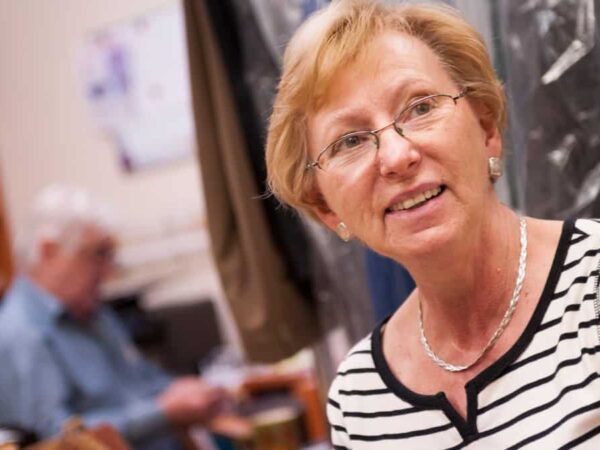Resources for Women-Owned Businesses
Resources to help women-owned businesses take advantage of government and private programs to help them grow and gain traction.

According to the National Women’s Business Council, there are 13 million women-owned businesses in the U.S, employing 9.4 million workers and generating $1.9 trillion in revenue. Those are some impressive numbers! With that, there are a number of resources out there to help women-owned businesses get equal opportunities for success.
Both governmental and private organizations have demonstrated a commitment to helping women-owned businesses compete in the US market. These groups provide mentoring, employment contracts, education, networking, and even federal contract priority to ensure that women-owned businesses get a fair shake.
While there are a variety of business resources targeted toward women-owned businesses in general, there are additional resources available for women in traditionally male-dominated industries, such as STEM-related fields. Women are beginning to break down barriers and now represent a growing faction of those working in areas such as public works, utilities, construction, engineering, and architecture. Additional resources for funding, federal contract procurement, and education in these areas are especially vital for women so that their presence can continue to grow in these highly technical fields.
These are some of the organizations that offer resources to help women start and run their organizations:
Small Business Administration Federal Contracting Program
The Small Business Administration (SBA) is one of the biggest sources of support for women-owned businesses and aspiring female entrepreneurs. The SBA focuses on entrepreneurial recruitment, free education, and the advancement of businesswomen through technical support, funding, and special government incentive programs.
The most innovative program supported by the SBA helps women find gainful employment through accessible government contracts. The Women-Owned Small Business (WOSB) Federal Contracting Program began in 2011 to assist women and women-owned companies in expanding their scope in technically demanding industries.
Under this program, the SBA helps Economically Disadvantaged WOSBs (EDWOSBs) get improved access to technical industries, where women have been historically underrepresented. Under federal law, a certain number of contracts are set aside for qualified EDWOSBs, so they’re there for the taking if you meet the SBA’s requirements. WOSB has helped to level the playing field for women in the STEM sectors and promote their advancement in male-dominated business realms.
Women-Specific Grants and Loans
One of the most important things a small business owner needs to do at the outset is secure financing. Without proper funding, a small business will never get off the ground. The numbers show that men are more likely to receive funding, such as loans and equity funding than women (38% vs. 30%). That’s discouraging, but the good news is that there are specific programs available exclusively to female entrepreneurs. For example, there are a variety of grants available for women in business.
One of the most impactful sources of funding for women in business is the SBA’s Women-Owned Business Program. A business that is 51% owned and controlled by women will have access to federal funding in the form of special grants and loans, as well as priority access to federal contracts in over 80 STEM-related industries. Regional SBA offices can help you find out the options available for your women-owned company. Contact your local SBA here for more details.
Additional Small Business Funding Options
Of course, the SBA provides loans to all small businesses, not just women-owned companies. Below are additional options to consider when funding your own business:
The 7(a) Loan Program is intended for small business owners to fund their start-up or run their existing businesses.
Microloans are generally smaller business loans. They typically have a maximum loan amount of $50,000 but the average microloan is a more manageable $13,000. These loans are intended to help small businesses with smaller start-up costs or ongoing business costs, such as inventory, business supplies, payroll, leasing, or working capital. Each lender has different restrictions on their loan programs, so it’s best to check with your lender to check what your loans are designated for.
The CDC/504 Loan Program allows businesses to purchase real estate or business equipment, so the business can build capital and credit while acquiring fixed assets. This is an excellent option for a brick-and-mortar shop.
Disaster Loans are designed to help a business rebuild after suffering a catastrophic loss from a natural disaster. These loans are for emergency use only, and not intended to fund a start-up business.
Loan programs offered specifically to small businesses generally provide more lenient qualifying terms, as well as some flexibility for loan repayment parameters. Researching available small business lenders and different programs makes you an informed consumer, so take your time with this all-important decision to ensure you are apprised of all the obligations as a lendee.
Women’s Business Enterprise National Council (WBENC)
provides women-owned companies with support in the form of mentorships, scholarships, and advocacy. Their mission statement is “to fuel economic growth globally through access to opportunities, by identifying, certifying, and facilitating the development of women-owned businesses.”
In addition to providing business development resources as the top advocate for women-owned businesses, the WBENC boasts that they are the largest third-party certifier of women-owned businesses. The certification includes a formal assessment and a site visit to validate that the business is at least 51% women-owned. Many of the other programs that offer women-specific resources require this kind of certification in order to qualify for their programs. In other words, that certification can put you in line for special business opportunities, grants, and contracts.
Certification can be provided by any of the council’s fourteen regional partners. For more information, check out the WBENC site for details on their specific programs.
U.S. Women’s Chamber of Commerce (USWCC)
is an independent organization that provides resources and advocacy for women business owners. The Women’s Chamber can also provide qualifying companies with WOSB certification so the company can pursue women-targeted opportunities and federal contracts.
Aside from resources and certification, the Women’s Chamber also plays an important advocacy role for women’s rights in the business world. USWCC was involved in litigation against the SBA for failure to adhere to federally mandated set-asides for women-owned contracts. The Women’s Chamber prevailed in their suit and ensured that federal set-asides would continue to help women-owned businesses grow.
Years before the set-aside litigation, the USWCC supported the Lilly Leadbetter Act, which provided for equal pay for men and women in the workplace.
National Association of Women Business Owners (NAWBO)
private, membership-based organization focuses on networking amongst members within its 60 national chapters. Aside from networking opportunities, NAWBO also provides online educational resources and discounts which can be used for business costs. This organization focuses on connecting women in business with each other so they can meet and learn from others with similar entrepreneurial experiences and support each other’s ventures.
NAWBO memberships are split into four distinct categories ranging from student-level membership to an established, active entrepreneur membership level. Application costs vary by level of membership so you can get involved even if you’re just starting out and have limited resources. Interested prospective applicants can find more information about the process and membership levels here.
The Bottom Line
Women have been making their mark on the business world for years. The number of women-owned businesses continues to grow as female entrepreneurs seek to make their mark. Meanwhile, women continue to join the ranks of the STEM industry in record numbers. However, women are still fighting an uphill battle for recognition and equal opportunities in the business world. These resources can help level the playing field.









